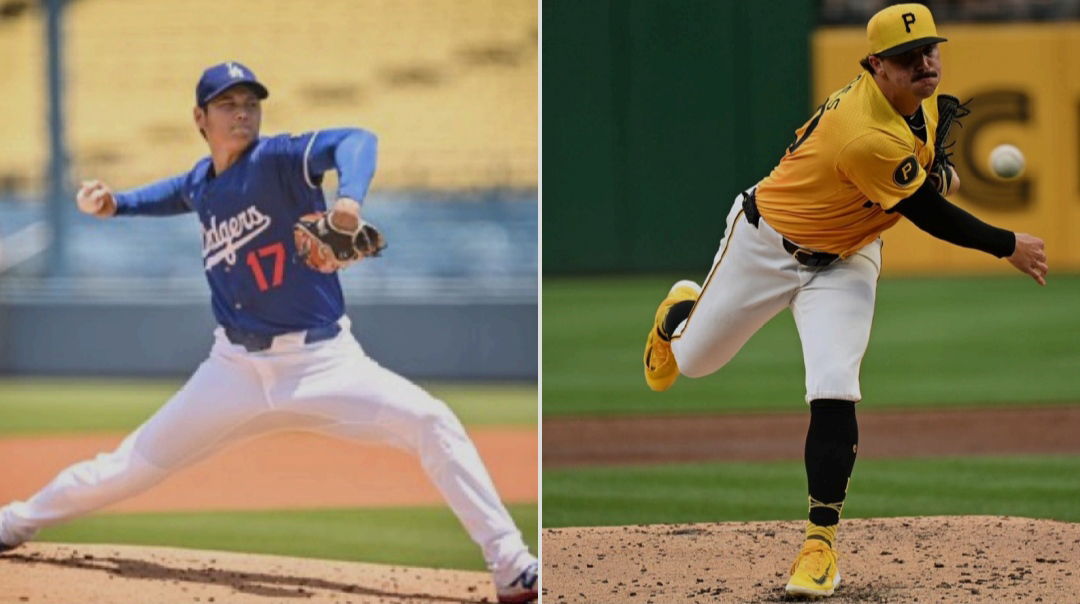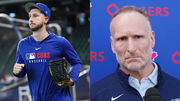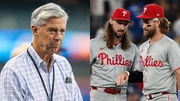
Imago
MLB.com Twitter

Imago
MLB.com Twitter
All afternoon, Dodgers fans clutched the lineup card like it was a golden ticket. Shohei Ohtani, the game’s ultimate two-way star, was supposed to be the starting pitcher under the bright lights of Chavez Ravine. This wasn’t just another September night in L.A.; it was the kind of stage that pulls in viewers from coast to coast, the promise of Ohtani on the mound turning a regular matchup into must-watch drama.
Watch What’s Trending Now!
Then came the twist. By the time the first pitch approached, Ohtani’s name had shifted, not on the mound, but in the designated hitter slot. Confusion gave way to speculation. Was this a simple case of managing workload, or something more deliberate? Because pushing Ohtani back one day would line him up for the kind of matchup Major League Baseball dreams about: a duel against Pittsburgh’s rookie sensation Paul Skenes.
For Dodgers fans, the timing felt too perfect to ignore. National broadcasts crave marquee showdowns, and ticket sales spike when stars collide. Pairing Ohtani’s global appeal with Skenes’ meteoric rise doesn’t just promise baseball, it promises theater. That’s why whispers quickly shifted from dugout strategy to league optics: was this a tactical delay, or a calculated setup for maximum spotlight?
ADVERTISEMENT
Shohei Ohtani was initially listed as tonight's Dodgers starting pitcher, but now he's listed as the DH instead
If the Dodgers are simply pushing him off a day, he would be lined up to face Paul Skenes tomorrow night pic.twitter.com/dVsOWXy4uM
— Talkin’ Baseball (@TalkinBaseball_) September 3, 2025
And that’s exactly where Commissioner Rob Manfred finds himself uncomfortably wedged, between the purity of competition and the pull of entertainment value. Officially, this is Dave Roberts’ decision, but the optics fuel a bigger conversation: does MLB subtly orchestrate its most marketable moments? The suspicion may not be fair, yet the timing makes it hard to dismiss.
Purists argue the late switch erodes trust, making fans wonder if strategy is being bent to serve storylines. Pragmatists counter that baseball has always thrived on theater, Babe Ruth calling his shot, Cal Ripken chasing history, or now, Ohtani squaring off against a 22-year-old fireballer. The game’s appeal has always been tied to spectacle, and this spectacle practically sells itself.
ADVERTISEMENT
If Shohei Ohtani indeed takes the ball against Skenes, Friday night could feel less like a September matchup and more like a playoff preview. Two generational talents, one mound, and millions watching with popcorn in hand. Whether by design or coincidence, the league has stumbled into must-see TV.
And yet, every pitch will carry an unspoken subplot. The commissioner doesn’t need to script a word, because the conversation is already humming: how far should baseball go in engineering its biggest moments, and how much is too much?
ADVERTISEMENT
Manfred in the crosshairs as Shohei Ohtani and Skenes’ ratings conspiracy gains steam
The switch didn’t just alter the Dodgers’ lineup; it flipped the narrative for an entire series. Within minutes, talk radio and social feeds lit up with theories, many pointing fingers not at Dave Roberts but at MLB itself. The timing felt almost too cinematic: the league’s biggest star conveniently lined up against its hottest rookie. For fans, that wasn’t a coincidence; it was choreography.
Manfred called and said we need those Ohtani/Skenes ratings
— TONY TOE TAP (@antoniosburner) September 3, 2025
ADVERTISEMENT
The comment, “Manfred called and said we need those Ohtani/Skenes ratings,” isn’t meant literally, but it captures the suspicion many fans feel about MLB’s priorities. Shohei Ohtani has already proven he’s a ratings juggernaut, with his Dodgers debut in 2024 drawing the most-watched regular-season MLB broadcast in nearly a decade. Paul Skenes, meanwhile, has turned every start into a must-watch, with Pittsburgh’s local viewership spiking more than 30%. Put the two together, and you’ve got a matchup perfect for national headlines. Fans see that and can’t help but wonder: Is this smart rotation management, or a league nudging its biggest attractions into the same spotlight to cash in?
Top Stories
Blue Jays Confirmed to Land MLB’s “Big Fish” After Mark Shapiro Fires Bold Message to Clubhouse, per Insider

Rift in Phillies Clubhouse as Dave Dombrowski Punishes Bryce Harper Teammate in “Worst Trade” Fallout, Says Insider

MLB Signings: 5 Teams That Must Sign Kyle Tucker, Bo Bichette & Alex Bregman

Mark Shapiro Rubs Salt in Yankees’ Wounds as He Issues Stark Ultimatum to Blue Jays Clubhouse

MLB News: Mets Suffer $17.75M Loss to Make Francisco Lindor Happy & End Clubhouse Animosity for Good

The crack, “MLB really asked Dave to push his start back lmaoo,” isn’t just about humor; it’s about mistrust. Baseball fans have grown wary of how the league handles its biggest stars, from constant primetime scheduling of Aaron Judge’s home run chase to MLB’s global marketing blitz around Ohtani. So when a switch suddenly lines Ohtani up against Paul Skenes, fans don’t shrug it off as a coincidence; they default to suspicion. The joke lands because it taps into a larger truth: people believe MLB will always find a way to turn strategy into spectacle if it means more eyes and more dollars.
When fans joke, “MLB marketers made the boss call,” they’re really pointing at the business machine that hums beneath the surface of every marquee matchup. Shohei Ohtani vs. Skenes isn’t just baseball; it’s a revenue engine. Networks know viewers will tune in, advertisers line up to pay premium rates, and suddenly every inning break feels like a sales pitch as much as a sporting event. For the league, that’s a win: marquee stars translate directly into broadcast dollars. For fans, it’s a reminder that the spectacle they love is also carefully packaged entertainment with the commercials as unavoidable proof.
ADVERTISEMENT
“Literally, the only reason I was even going to the game tonight.” Others didn’t hold back when the news dropped. Many had circled Thursday as the night to see Shohei Ohtani duel Paul Skenes, paying inflated prices on the secondary market for what was billed as a once-in-a-season matchup. Instead, Ohtani shifted to DH, and the showdown slid to Friday, instantly sending those tickets skyrocketing in value while leaving Thursday’s buyers feeling duped.
That’s why the frustration hit so hard: what fans thought they were paying for wasn’t just a ballgame, it was the spectacle, and now they’re left wondering if baseball’s biggest stars are being scheduled less for competition and more for commerce.
ADVERTISEMENT
ADVERTISEMENT
ADVERTISEMENT

